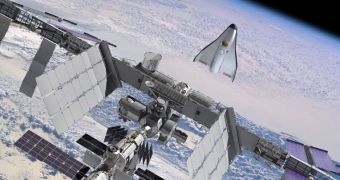Officials with the Vienna, Virginia-based Orbital Sciences Corporation (OSC) announced that the space plane they are developing to taxi astronauts to low-Earth orbit will be called Prometheus.
The move shows consistency with the line the company took some time ago, when officials there decided to go with Greek mythology as a main source of inspiration. The company also operates the Minotaur, Pegasus and Taurus rockets.
Prometheus, their new space plane, is named after the titan that stole fire from the gods, and then gave it to humans. He was condemned to eternal suffering by Zeus. The legend has become a symbol of inspiration in the fight against oppressors.
The new spacecraft will be developed under a NASA program aimed at supporting companies seeking to develop viable alternatives for transporting astronauts to the International Space Station (ISS).
The American space agency is retiring its three-shuttle fleet this July, and America will be left without the ability to reach LEO on demand for the first time in its history. NASA astronauts will have to use Russian-built Soyuz space capsules to get to the station.
In addition to the Prometheus and the aforementioned rockets, OSC is also developing the Cygnus cargo spacecraft, also destined for use on the ISS, and the accompanying Taurus 2 delivery system.
At this point, this joint system is competing directly with the one built by Hawthorne, California-based Space Exploration Technologies Corp. (SpaceX). The company is developing the Falcon 9 rocket and the unmanned Dragon space capsule.
OSC representatives say that the Prometheus is being constructed under the second phase of the NASA Commercial Crew Development program (CCDev-2). This project is meant to encourage private spaceflight firms to develop their astronaut-carrying capabilities.
As a whole, Prometheus looks like a smaller shuttle, featuring a blended lifting body design. NASA documents show that it would launch aboard an expendable vehicle, but that it would land on a runway.
Though originally designed to carry four astronauts, the spacecraft could be modified to accommodate a crew as large as six. This means it could end up carrying one astronaut less than the much more massive space shuttles.
The company does not yet have a timeline for developing the new spacecraft. Funding from the American space agency could start flowing as early as next month though, if the OSC proposal is accepted, Space reports.

 14 DAY TRIAL //
14 DAY TRIAL //